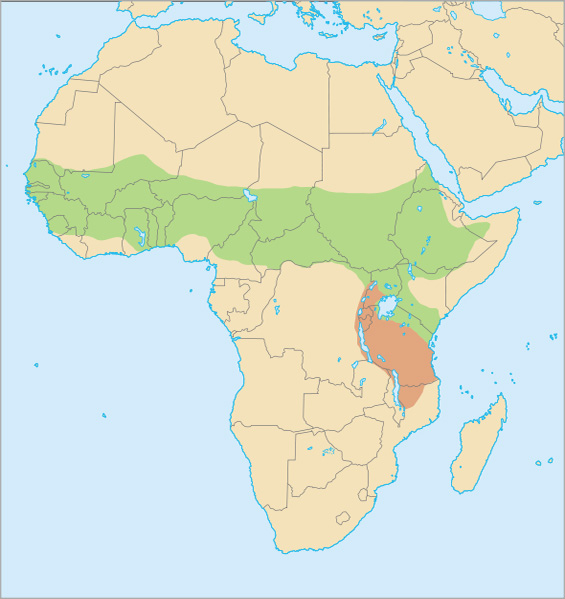
Ismert mint
- Komba senegalská
- Komba obecná
- Uchoš dlouhoocasý
Súlyok és méretek
| Marmagasság | 130 mm |
|---|---|
| Súly | 95-tól 300-ig g |
Biológiai adatok
| Vemhességi idő | 110-tól 120-ig d |
|---|---|
| Utódok száma | 1 - 2 |
Veszélyeztetettség
| Rettenthetetlen |
Állatleírás
The Senegal bushbaby (Galago senegalensis), also known as the Senegalese bushbaby or lesser galago, is a small, nocturnal primate indigenous to the savannahs and woodlands of Western Africa. This fascinating creature belongs to the family Galagidae and is characterized by its remarkable agility, distinctive vocalizations, and large, expressive eyes that are well-adapted to its nocturnal lifestyle.Physical Characteristics:
The Senegal bushbaby has a compact and nimble body, typically weighing between 200 to 300 grams, with a body length ranging from 13 to 17 centimeters, and a tail that can be just as long if not longer, measuring up to 20 centimeters. Its fur is soft and dense, usually colored in shades of grey or brown, with a lighter underbelly. What sets the Senegal bushbaby apart are its large, round eyes that glow when caught in light, providing excellent night vision. It also possesses powerful hind limbs, equipped with elastic joints, enabling it to leap great distances between trees or branches, a skill crucial for evading predators and hunting insects.
Behavior and Diet:
The Senegal bushbaby leads a primarily arboreal and nocturnal lifestyle, spending the day in tree hollows or dense foliage to sleep and emerging at night to feed and explore. Its diet is omnivorous but heavily leans towards eating insects, particularly moths and beetles, which it catches either in mid-air or plucks from tree bark and leaves. It also consumes fruits, gums, and occasionally small vertebrates. Its large ears, capable of independent movement, are highly sensitive and help it detect the faint sounds of prey or predators.
Social Structure and Reproduction:
Senegal bushbabies are generally solitary or live in small family groups. They communicate through a variety of vocalizations, including whistles, clicks, and crackles, which serve to establish territory, signal distress, or maintain social bonds. During the breeding season, which can vary depending on their geographical location, females may give birth to one or two offspring after a gestation period of about four months. The young are cared for attentively by their mothers, riding on their backs for the first few weeks of life and being hidden in nests while the mother forages for food.
Conservation Status:
Currently, the Senegal bushbaby is classified as Least Concern by the International Union for Conservation of Nature (IUCN), indicating that it is relatively widespread and abundant within its habitat. However, like many wild species, it faces threats from habitat destruction due to agricultural expansion, logging, and human settlement. Additionally, bushbabies are sometimes captured for the pet trade or hunted for food, which can impact local populations.
In conclusion, the Senegal bushbaby is a remarkable example of adaptation and survival in the diverse ecosystems of Western Africa. Its unique physical and behavioral traits make it a fascinating subject of study for primatologists and wildlife enthusiasts alike. Despite its current conservation status, ongoing efforts are necessary to ensure that this nocturnal primate can continue to thrive in its natural habitat.
Előfordulási térkép

Új állatfotók
Top 10 állat
- Dolphin gull (Leucophaeus scoresbii)
- Diana monkey (Cercopithecus diana)
- Moustached guenon (Cercopithecus cephus)
- Galápagos tortoise (Geochelone nigra complex)
- Japanese macaque (Macaca fuscata)
- Russian tortoise (Testudo horsfieldii)
- Stone loach (Barbatula barbatula)
- Greek tortoise (Testudo graeca)
- Common flying dragon (Draco volans)
- Vendace (Coregonus albula)